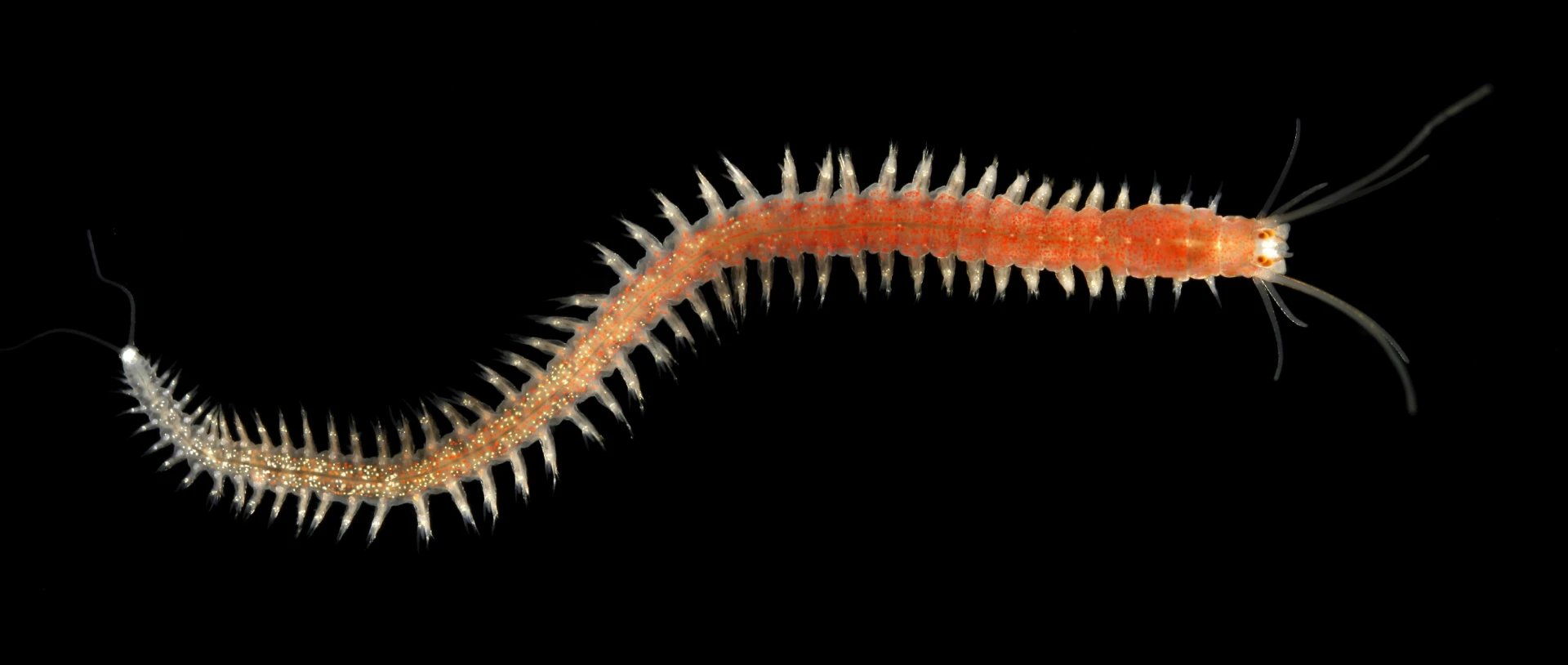
We use a specific model organism in the lab. It’s a marine ragworm called Platynereis dumerilii but we call it platy for short. These animals grow to around 3–4cm in size and they’re found all over the place in Europe: across all coastlines from Norway to Italy. They span a wide range of habitats – just think of how much difference there is between Norway and Italy in temperature alone.

In our work, we’ve been focusing on specific time points in the platy’s development: six days after they develop when they’re in the intermediate phase between being a larva and a fully formed worm. At this point, they are still small enough to sample all the cells in their body for transcriptomic analysis. We’re trying to understand how the different cell types adapt to different environments.
Because we’re studying the worms just a few days after they develop, we need the reproduction process to be controlled. To do this, we have to visit different sites and collect samples (normally at midnight). During the darkest phase of the night, the mums and dads swim up to the surface to find a mating partner and we try to catch them with little fishnets before this happens. Back at the lab, we will fertilise the eggs and put them in incubators at the marine stations so they can be processed in a standardised way for use in our experiments.
Through EMBRC, we were able to access and collect the platy from different environments. Facilitating this access to the sea is really important – people often forget that there are legal issues around these types of visits that have to be taken into consideration. There are safety issues to think about and you need to make sure you’re following regulation when it comes to Access and Benefit Sharing (ABS). I had lots of meetings with the EMBRC team and the marine station before my visit and they helped me to sort all the logistics, legal issues and figure out the best place to go to collect my samples.
At the marine station I was also able to use things like liquid nitrogen and fume hoods to fix the samples. And once I was there, they helped with things like accommodation and food which made everything much easier.
We’ve also been involved in the TREC expedition to access even more EMBRC sites and sample more Platy populations around Europe.
Kristineberg is a paradise for platy. It was very easy to find them there and we were able to collect hundreds of samples, which was brilliant. But we don’t have results we can share just yet. At the moment, we’re in the process of analysing our data.
Firstly, platy are an important part of the wider ecosystem. They go over the substrate and eat what’s growing there. Digesting their food sources, such as algae, helps to bring important nutrients back into the sea. And also fish like to eat them. When they spawn, the fish are just waiting to feast on them, which is why the platy tend to spawn at the darkest time of night.
We’re hoping to get an idea of which cell types change the most to adapt to changing variables like temperature, salinity and things like that. Even though we’re focused specifically on platy, cell types are shared between animals, and even kingdoms of animals, from very different parts of the phylogenetic tree. So we’re interested in how cell types may be linked across the tree of life and how this knowledge allows us to predict important cell types in other organisms. This might be able to give us an idea which species might have a harder time with global warming and which might cope with changes in climate more easily.
Going out at night to sample the platy was really cool. It was midsummer so although it was the middle of the night, it was still kind of light. It’s pretty exhausting though – it involved two weeks of working night shifts so our body clocks got quite confused.
Now, we’re analysing our data to see what insights we can gather about these interesting marine worms.


